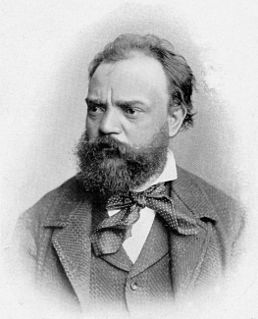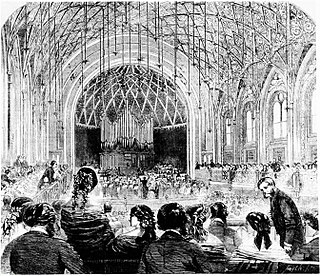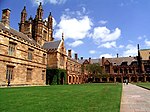
Isaac Stern was an American violinist.

The Violin Concerto in D major, Op. 61, was written by Ludwig van Beethoven in 1806. Its first performance by Franz Clement was unsuccessful and for some decades the work languished in obscurity, until revived in 1844 by the then 12-year-old violinist Joseph Joachim with the orchestra of the London Philharmonic Society conducted by Felix Mendelssohn. Joachim would later claim it to be the "greatest" German violin concerto. Since then it has become one of the best-known and regularly performed violin concertos.
Sir Donald Tovey's Essays in Musical Analysis are a series of analytical essays on classical music.

Jascha Heifetz was a Russian-born American violinist. Born in Vilnius, he moved while still a teenager to the United States, where his Carnegie Hall debut was rapturously received. He was a virtuoso since childhood. Fritz Kreisler, another leading violinist of the twentieth century, said after hearing Heifetz's debut, "We might as well take our fiddles and break them across our knees." He had a long and successful performing career; however, after an injury to his right (bowing) arm, he switched his focus to teaching.

Sarah Chang is a Korean American classical violinist. Recognized as a child prodigy, she first played as a soloist with the New York Philharmonic and the Philadelphia Orchestra in 1989. She enrolled at Juilliard School to study music, graduated in 1999, and continued university studies. Especially during the 1990s and early to mid-2000s, Chang had major roles as a soloist with many of the world's major orchestras.
James Ehnes, is a Canadian concert violinist and violist.
René-Charles "Zino" Francescatti was a French virtuoso violinist.
Gil Shaham is an American violinist of Israeli Jewish descent.
The Cello Concerto in B minor, Op. 104, B. 191, is the last solo concerto by Antonín Dvořák. It was written in 1894 for his friend, the cellist Hanuš Wihan, but was premiered in London on March 19, 1896, by the English cellist Leo Stern.

William Steinberg was a German-American conductor.

Alisa Weilerstein is an American classical cellist. She was named a 2011 MacArthur Fellow.

The Symphony No. 3 in E♭ major, Op. 10, B. 34, is a classical composition by Antonín Dvořák.

The Sydney University Musical Society (SUMS) is an undergraduate choral society at the University of Sydney. Founded in 1878, it is one of the oldest secular choirs in Australia, and the oldest Australian University Choir.

St. James's Hall was a concert hall in London that opened on 25 March 1858, designed by architect and artist Owen Jones, who had decorated the interior of the Crystal Palace. It was situated between the Quadrant in Regent Street and Piccadilly, and Vine Street and George Court. There was a frontage on Regent Street, and another in Piccadilly. Taking the orchestra into account, the main hall had seating for slightly over 2,000 persons. It had a grand hall 140 feet (43 m) long and 60 feet (18 m) broad, the seating was distributed between ground floor, balcony, gallery and platform and it had excellent acoustics. On the ground floor were two smaller halls, one 60 feet (18 m) square; the other 60 feet (18 m) by 55 feet (17 m). The Hall was decorated in the 'Florentine' style, with features imitating the great Moorish Palace of the Alhambra. The Piccadilly facade was given a Gothic design, and the complex of two restaurants and three halls was hidden behind Nash's Quadrant. Sir George Henschel recalled its 'dear old, uncomfortable, long, narrow, green-upholstered benches with the numbers of the seats tied over the straight backs with bright pink tape, like office files.'
With its debut in 1993, the Pacific Symphony Youth Orchestra(PSYO) became the first educational program of Pacific Symphony and is now one of three youth orchestras in the Pacific Symphony Youth Ensembles (PSYE) program. Pacific Symphony Youth Orchestra gives an opportunity to young, talented musicians in the Orange County and Inland Empire areas to grow and be trained as orchestral musicians. Composed of youth in grades 9 through 12, members of PSYO are given the opportunity to work with the professional musicians of Pacific Symphony and are led by Roger Kalia, Associate Conductor of Pacific Symphony. PSYO currently performs its annual concert series in the Renée and Henry Segerstrom Concert Hall at the Segerstrom Center for the Arts.

David Pereira is an Australian classical cellist, considered one of the finest working today. He was Senior Lecturer in Cello at the Canberra School of Music from 1990 to 2008. Later he worked there as a Distinguished Artist in Residence. Since April 2017 he again teaches cello there as a Senior Lecturer.

Joan Field was an American violinist.
Joseph Swensen is a conductor, violinist, and composer. He is winner of awards, including the Leventritt Foundation Sponsorship Award and the Avery Fisher Career Award. In 2000, Swensen was awarded an honorary doctorate from the University of St Andrews, Scotland. In 2014, he gave a TedX talk with the title “Habitats for Music and the Sound of Math” about music education and the developing brain, at the New York Institute of Technology.
In music, Op. 40 stands for Opus number 40. Compositions that are assigned this number include:
In music, Op. 44 stands for Opus number 44. Compositions that are assigned this number include:












